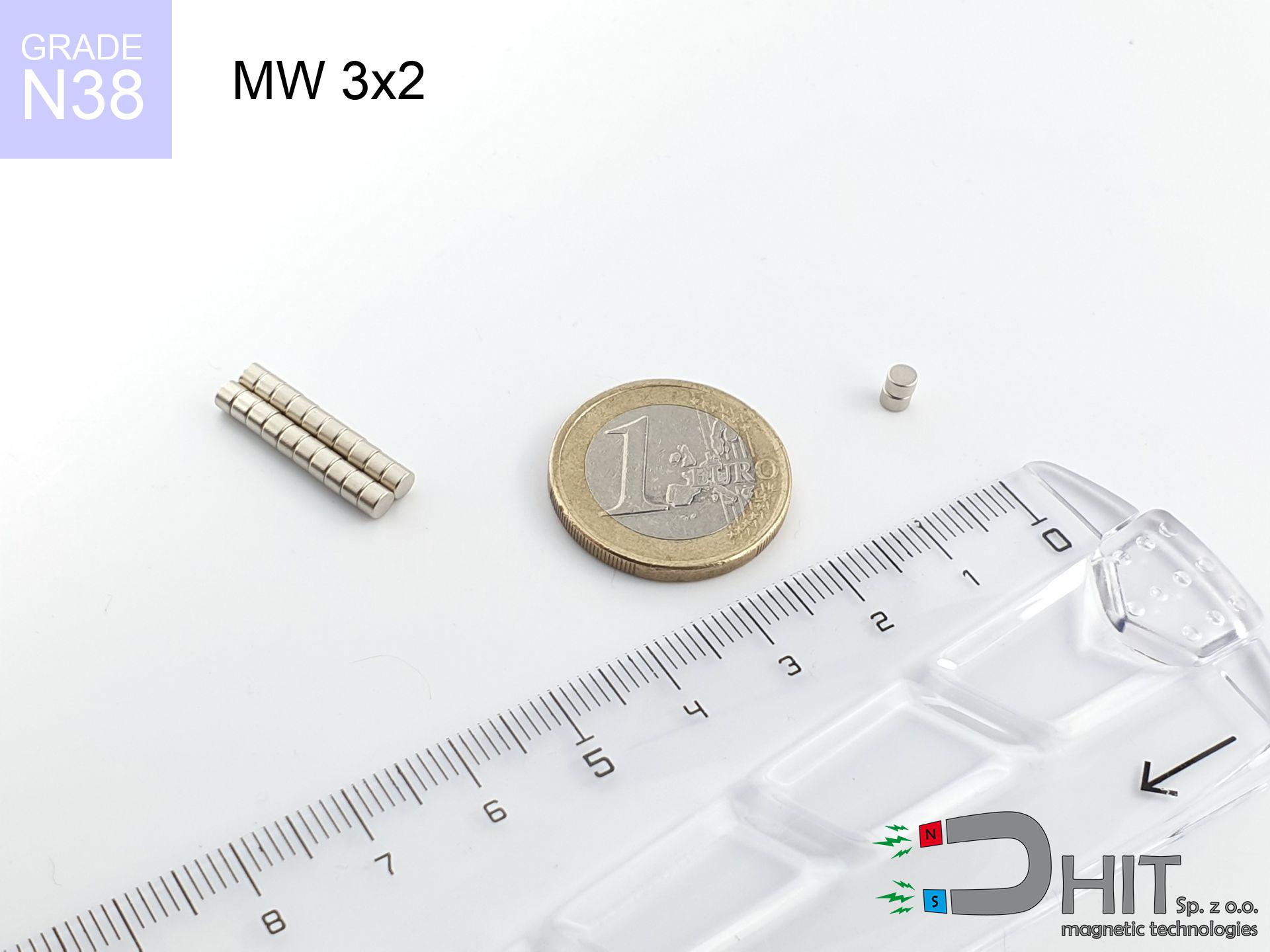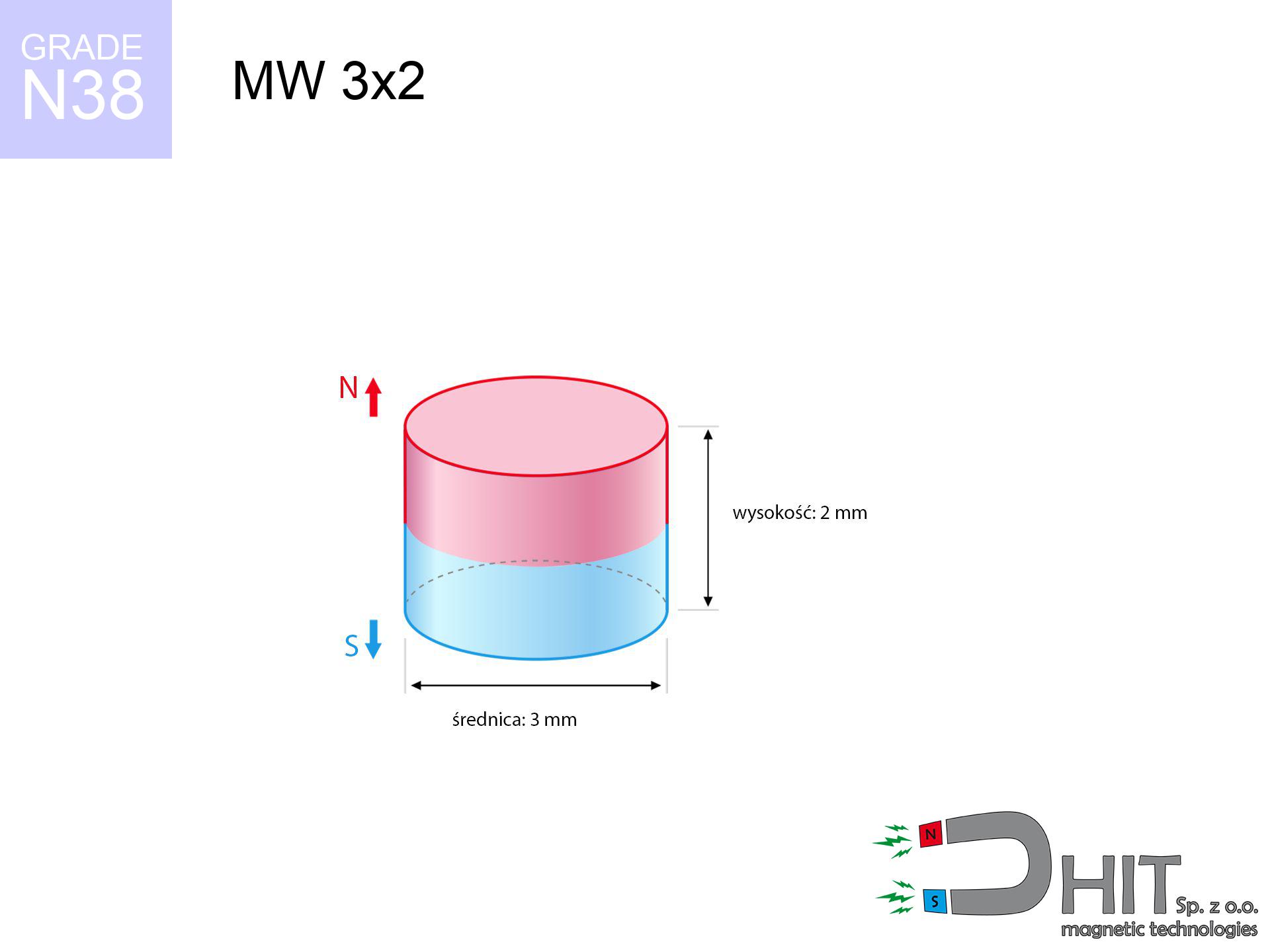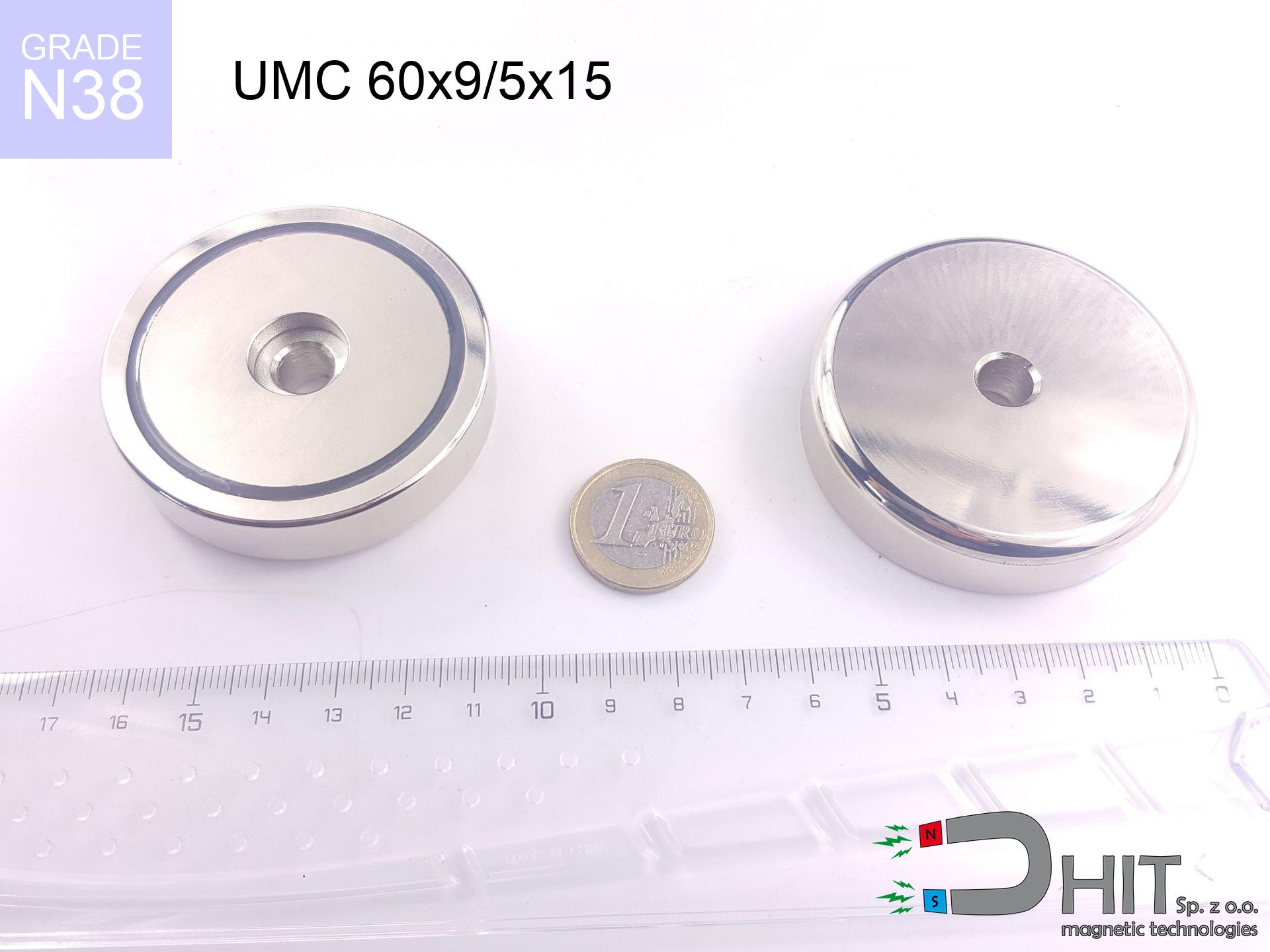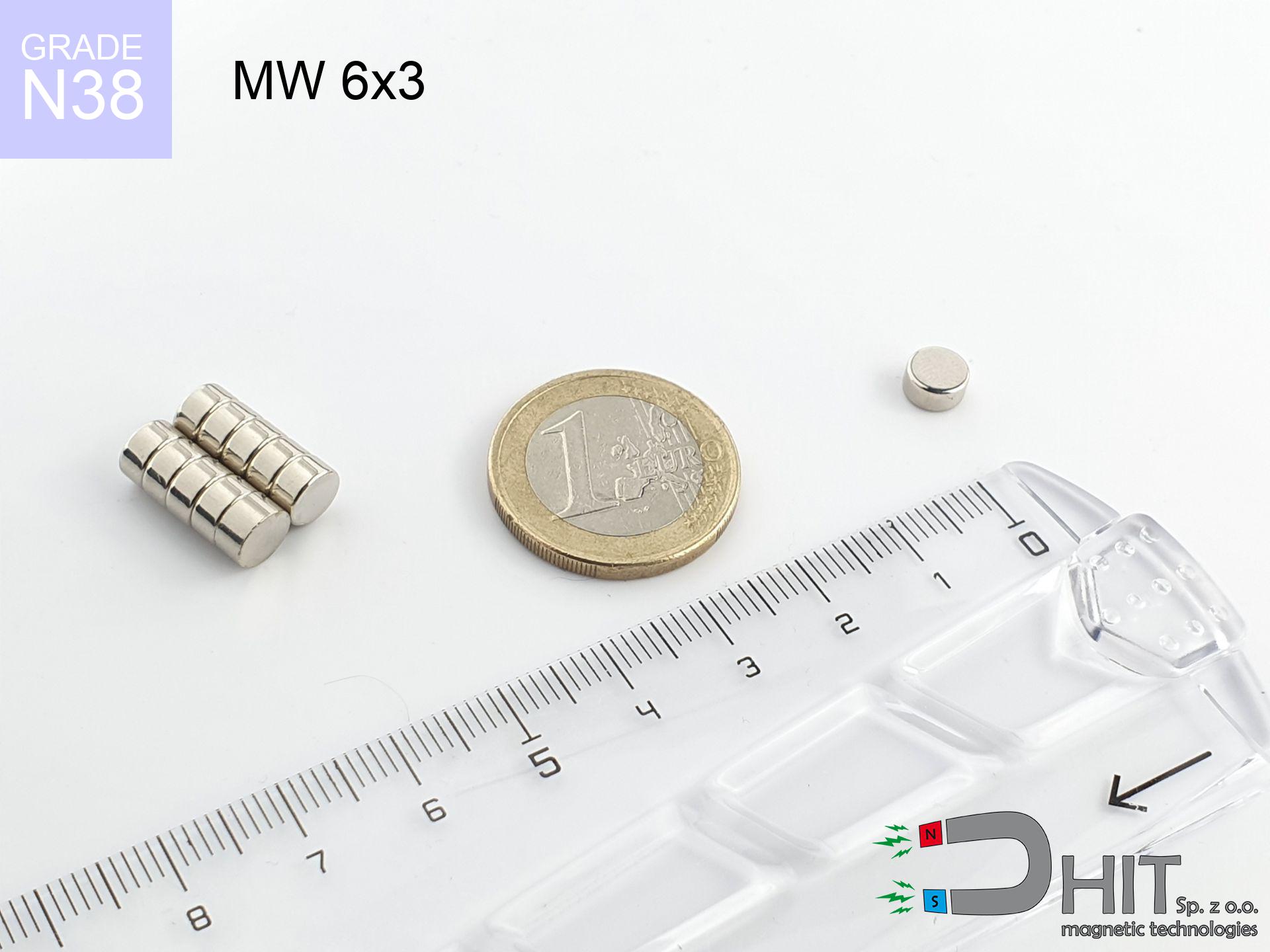MW 3x2 / N38 - cylindrical magnet
cylindrical magnet
Catalog no 010064
GTIN: 5906301810636
Diameter Ø
3 mm [±0,1 mm]
Height
2 mm [±0,1 mm]
Weight
0.11 g
Magnetization Direction
↑ axial
Load capacity
0.33 kg / 3.24 N
Magnetic Induction
493.99 mT
Coating
[NiCuNi] nickel
0.1476 ZŁ with VAT / pcs + price for transport
0.1200 ZŁ net + 23% VAT / pcs
bulk discounts:
Need more?Not sure about your choice?
Pick up the phone and ask
+48 22 499 98 98
if you prefer contact us via
inquiry form
the contact form page.
Parameters and form of magnets can be calculated with our
force calculator.
Orders submitted before 14:00 will be dispatched today!
Magnetic properties of material N38
Physical properties of sintered neodymium magnets Nd2Fe14B at 20°C
Shopping tips
Advantages and disadvantages of NdFeB magnets.
Besides their exceptional field intensity, neodymium magnets offer the following advantages:
- They virtually do not lose strength, because even after ten years the performance loss is only ~1% (in laboratory conditions),
- Magnets effectively defend themselves against demagnetization caused by external fields,
- The use of an metallic finish of noble metals (nickel, gold, silver) causes the element to have aesthetics,
- Magnetic induction on the top side of the magnet turns out to be very high,
- Thanks to resistance to high temperature, they are able to function (depending on the shape) even at temperatures up to 230°C and higher...
- Thanks to the possibility of accurate forming and customization to unique requirements, neodymium magnets can be manufactured in a wide range of forms and dimensions, which makes them more universal,
- Key role in modern technologies – they are commonly used in mass storage devices, brushless drives, advanced medical instruments, and industrial machines.
- Compactness – despite small sizes they provide effective action, making them ideal for precision applications
Disadvantages of neodymium magnets:
- Susceptibility to cracking is one of their disadvantages. Upon strong impact they can fracture. We recommend keeping them in a steel housing, which not only secures them against impacts but also increases their durability
- When exposed to high temperature, neodymium magnets experience a drop in strength. Often, when the temperature exceeds 80°C, their strength decreases (depending on the size and shape of the magnet). For those who need magnets for extreme conditions, we offer [AH] versions withstanding up to 230°C
- When exposed to humidity, magnets start to rust. To use them in conditions outside, it is recommended to use protective magnets, such as those in rubber or plastics, which secure oxidation and corrosion.
- Limited ability of making threads in the magnet and complicated shapes - preferred is a housing - mounting mechanism.
- Potential hazard related to microscopic parts of magnets are risky, if swallowed, which becomes key in the context of child safety. Additionally, tiny parts of these products can disrupt the diagnostic process medical in case of swallowing.
- Due to complex production process, their price is relatively high,
Maximum lifting force for a neodymium magnet – what affects it?
The specified lifting capacity concerns the limit force, obtained under laboratory conditions, meaning:
- using a base made of mild steel, acting as a circuit closing element
- whose transverse dimension is min. 10 mm
- characterized by lack of roughness
- under conditions of no distance (surface-to-surface)
- during detachment in a direction vertical to the mounting surface
- at ambient temperature room level
Lifting capacity in practice – influencing factors
Holding efficiency is influenced by specific conditions, including (from most important):
- Distance – the presence of foreign body (paint, tape, gap) interrupts the magnetic circuit, which reduces capacity rapidly (even by 50% at 0.5 mm).
- Loading method – catalog parameter refers to detachment vertically. When attempting to slide, the magnet exhibits significantly lower power (typically approx. 20-30% of nominal force).
- Metal thickness – thin material does not allow full use of the magnet. Part of the magnetic field passes through the material instead of converting into lifting capacity.
- Plate material – mild steel attracts best. Alloy steels lower magnetic properties and lifting capacity.
- Smoothness – ideal contact is obtained only on smooth steel. Any scratches and bumps create air cushions, reducing force.
- Temperature – heating the magnet causes a temporary drop of force. Check the maximum operating temperature for a given model.
* Lifting capacity testing was carried out on a smooth plate of suitable thickness, under perpendicular forces, in contrast under shearing force the holding force is lower. Additionally, even a small distance {between} the magnet and the plate decreases the holding force.
Precautions when working with NdFeB magnets
Power loss in heat
Avoid heat. Neodymium magnets are susceptible to heat. If you need operation above 80°C, ask us about special high-temperature series (H, SH, UH).
Danger to pacemakers
Patients with a ICD must keep an absolute distance from magnets. The magnetic field can disrupt the functioning of the implant.
Fire warning
Machining of NdFeB material poses a fire risk. Neodymium dust oxidizes rapidly with oxygen and is hard to extinguish.
Material brittleness
Despite metallic appearance, the material is delicate and cannot withstand shocks. Do not hit, as the magnet may crumble into sharp, dangerous pieces.
Finger safety
Big blocks can smash fingers instantly. Under no circumstances put your hand betwixt two attracting surfaces.
No play value
These products are not suitable for play. Eating a few magnets may result in them attracting across intestines, which constitutes a severe health hazard and requires immediate surgery.
Allergic reactions
Nickel alert: The nickel-copper-nickel coating contains nickel. If skin irritation appears, cease handling magnets and use protective gear.
Magnetic media
Avoid bringing magnets near a wallet, laptop, or TV. The magnetic field can irreversibly ruin these devices and wipe information from cards.
Safe operation
Handle magnets with awareness. Their huge power can shock even experienced users. Be vigilant and do not underestimate their force.
Precision electronics
An intense magnetic field interferes with the functioning of compasses in phones and navigation systems. Maintain magnets near a smartphone to avoid damaging the sensors.
Safety First!
More info about hazards in the article: Safety of working with magnets.









